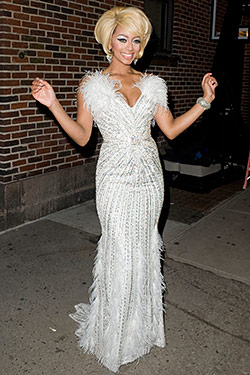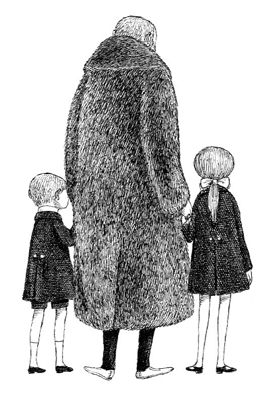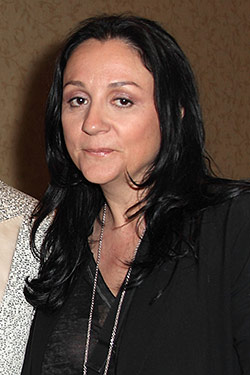
Sam Phillips. Credit: Robert Gauthier / Los Angeles Times
It happens to every critic, every year. After agonizing over your annual best list and turning it in, a realization arrives that a selection left behind really, really should be included. Careless omission or ill-considered compromise has created a glaring hole in the last assessment of the year, and regret sets in. Sometimes it lingers until the next list comes along.
The Times asked a select group of music writers to identify the one release of 2010 (or two, some couldn’t resist) that they felt bad about omitting from their top 10 lists. What follows are second-chance tips on the albums you should hear that didn’t get as much attention as Arcade Fire or Kanye West did; and for the musical authorities whose love can’t stay within the limits of an even number.
—Ann Powers
Alex Ross, New Yorker magazine music critic and author of the recent “Listen to This”: Tristan Perich’s “1-Bit Symphony” — an electronic composition coded into a homemade electronic circuit — certainly should have made my list. It’s a striking piece of technology and a no less striking piece of music — a harsh landscape of minimalist sound that on successive listenings might bliss you out or drive you mad.
Greg Kot, Chicago Tribune music critic and cohost of the radio show “Sound Opinions”: Sam Phillips is an absolute treasure, one of the best songwriters and singers of the last 20 years, and certainly one who doesn’t get nearly the recognition she deserves. She released a series of five EPs in 2010 collectively titled “Long Play” that are wonderful — little gems of carefully observed wordplay and haunting melody. Every word and note counts; Phillips has a knack for saying exactly what needs to be said in the most concise way possible. She’d make a helluva of an editor. I’ve finally caught up with most of these EPs and they rank with her best work. But because they weren’t collected in a tidy little album, I waited too long to really dig into them and give them proper consideration for my year-end, best-of list. I urge everyone not to make the same mistake. Rob Harvilla, Village Voice music editor: Katy Perry somehow got left off all my lists this year, though “Teenage Dream” and “Last Friday Night (T.G.I.F.)” are as deadly an album-opening tag-team as my heart could possibly stand 2010 producing. I apologize to Katy for not liking her quite enough, and to feminists everywhere for liking her at all. Edna Gundersen, USA Today music critic: I could gripe ad nauseum about all the overlooked albums this year, but one buried jewel that really deserved a wider audience is “Airtight’s Revenge,” marking a brilliant return by Bilal, who seemed to vanish after Interscope buried his 2006 album. I love this record. It’s personal, idiosyncratic, complex, dense, sophisticated and messy, a thoroughly contemporary soul record with a defiant indie-rock sensibility, which is why it never found a home on radio between Ke$ha and Taio Cruz. Evie Nagy, Billboard magazine associate editor: During 2010, there were multiple stretches of multiple hours (plane rides, deadline dashes, several round-trip commutes) when I could listen to nothing but the Editors’ song “Papillon” on repeat. There’s nothing objectively brilliant about it except that it pushes my most lizard-brained buttons for extraordinarily long periods of time.
It was so dominant that I was convinced all year that its album, “In This Light and on This Evening,” would make my top 10 for the outlets that asked me to cast a ballot — this one perfect song, surrounded by other perfectly competent songs, justified the album’s victory in my personal contest. But ultimately it didn’t — other stronger full packages won out, with the Editors’ album landing on my “if this list had 20 slots” list. I feel terrible, and haven’t listened to the song or album in weeks out of shame. I think we’ll make up by New Year’s, though.
Nekesa Moody, Associated Press music editor: OK, for singles: “Monster,” by Kanye West, featuring Rick Ross, Jay-Z and Nicki Minaj. Minaj absolutely destroys everyone on this track with a brilliant verse that lives up to the Minaj hype, and Kanye and Rick Ross represent well for themselves … but ah, that Jay rap. Love Jigga, but it’s so surprisingly subpar that I couldn't bring myself to put the entire song on my top 10. But ah, that Nicki Minaj!!!
For albums: Because there’s always someone I’m on the fence about, I do include an “honorable mentions” at the bottom [of my list]. A bit of cheating? Maybe. But it’s hard to be so absolute when a hair may separate the list-makers from the rejects. This year, I fear I may regret not listing Lizz Wright’s Fellowship, beautiful yet understated in its power. So lovely.
Alison Fensterstock, contributing writer, New Orleans Times-Picayune: Two things, staying in New Orleans even if that’s a little provincial of me: Galactic’s "Ya-Ka-May," its first for Anti- and a sort of weird and wonderful trip through the looking glass with New Orleans veterans. “Heart of Steel” with Irma Thomas makes me want a whole album like this with her — it’s ideologically similar to ?uestlove taking on Al Green or Jack White with Loretta Lynn, but pushes it farther and freakier.
Sax player Ben Ellman’s mixtape release, "Gypsyphonic/NOLA-Phonic Vol. 1," is kind of even more awesome — he uses vocal outtakes from his sessions with the bounce rappers on Ya-Ka-May, plus classic bounce, and blends them with Balkan brass bands. In part it’s a one-two punch of hipsterism, but it’s also kind of genius to take bounce’s complementary relationship with brass band music and flip it like that.
Charles Aaron, music editor, Spin magazine: Andreya Triana, “Lost Where I Belong” (Ninja Tune): Debut album by young London singer-songwriter who collaborates with producer Simon Green (a.k.a., Bonobo) — R&B that drifts in and around jazz, folk and electronic beats (she’s also worked with Flying Lotus), but never meanders or gets too precious. The best songs are subtle mini-dramas that keep drawing you closer, like she’s conveying some timeless, essential code, either in the grain of her voice or how she flutters over a breakbeat. I’ve imagined that she’s a long-lost peer of Terry Callier or Sade’s ignored younger sister or the early unknown voice of Massive Attack. It’s almost easier to believe than the fact that she’s only been marginally recognized.
Rob Sheffield, Rolling Stone: My pick is the Weekend album “Sports.” It just came out in November, on Slumberland Records, and I can't stop playing it the past few weeks. It’s an indie guitar album — lots of echo, lots of drone, lots of feedback, lots of melody, vocals that sound like they were recorded at the bottom of a swamp — that makes it all sound spontaneous and boyishly exuberant. It helps that the songs are fast, too. Fast counts for a lot when you’re talking doomy guitar bands. Since the Weekend album came out so late in the year, I think people are still discovering it. I’m looking forward to playing it in 2011.
Ann Powers: Realizing that I’d left Matt Morris’ “When Everything Breaks Open” (first released as a download in January on his friend Justin Timberlake’s Tennman Records) off my list was like opening up my suitcase and discovering I’d left my favorite, everyday, must-have sweater back home. I spent untold hours with this genteel, uncompromising album earlier this year, marveling at Morris’ knockout tenor and finding new nuances within his songwriterly blend of Nashville craft, Beatlesque tunefulness and soul fervor. I guess I started taking it for granted, distracted by flashier, more widely acknowledged stuff. But my list feels naked without it.
Follow up to Ann Powers list I also posted. Like that one, the commentaries are as interesting as the choices. They clearly love what they do.
Bonus points for including Alex Ross, even though his choice sounds awful.


















